
Client:
Location:
Services:
UWP is regulated within the Wisconsin Pollutant Discharge Elimination System (WPDES) Storm Water Discharge Permit Program. A condition of the permit requires UWP to meet a 40% reduction in total suspended solids (TSS) discharged from campus lands. Prior to this project, a third party review determined the existing stormwater management methods employed by UW-P were achieving an 11% reduction in TSS. Vierbicher was selected to analyze, plan, design and construct new stormwater management systems on the UWP campus to meet the 40% DNR permit requirement.
To achieve the stormwater management goals, Vierbicher reviewed the existing stormwater management measures and made recommendations for multiple new facilities on campus. A cost/benefit analysis was presented to the Campus sustainability committee for their review and ultimately incorporated in the Campus Master Plan. The Campus ultimately selected to move forward with a single, tiered pond solution.
The construction of the ‘Gully Pond’ stormwater facility had multiple challenges. The 100-acre urban watershed produces short duration, high flow rate discharges during storm events. The receiving drainage way was highly eroded with thick cover and not readily accessible. Multiple large hardwood trees were located in the project area and were considered an important part of the campus landscape. An aging municipal interceptor sewer conflicted with the proposed pond location and had been exposed by the eroding drainage way in multiple locations.
Vierbicher designed a tiered, wet detention pond system at a confluence of drainage ways through the campus. Adding stormwater management at this location allowed the entire campus to meet the sediment reduction goals required by the WPDES permit. Drainage-way stabilization measures were incorporated using a series of tiered gabion baskets and heavy rip-rap. Native seeding and landscaping were added to the final project to blend the project with the surrounding parklands.
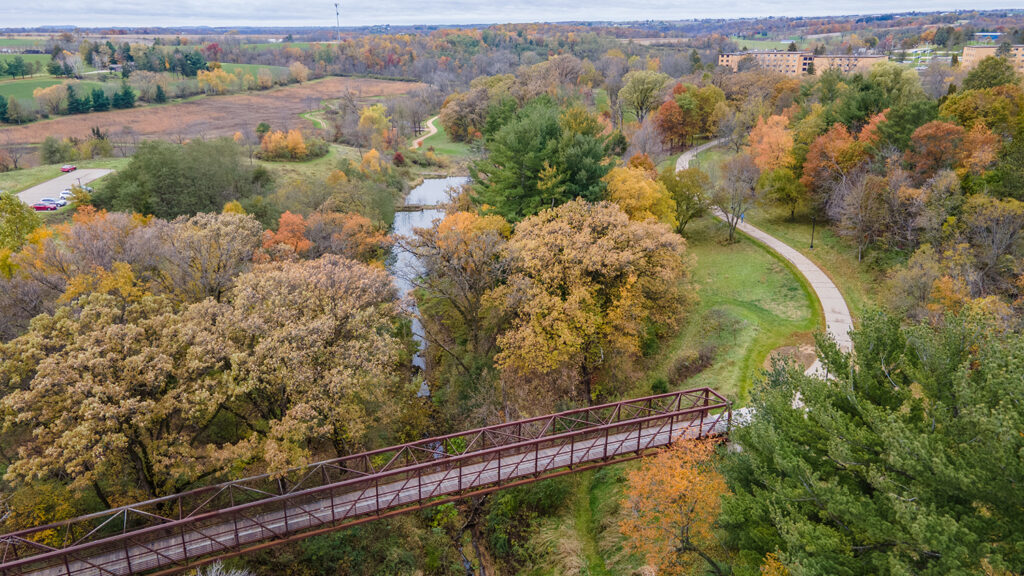
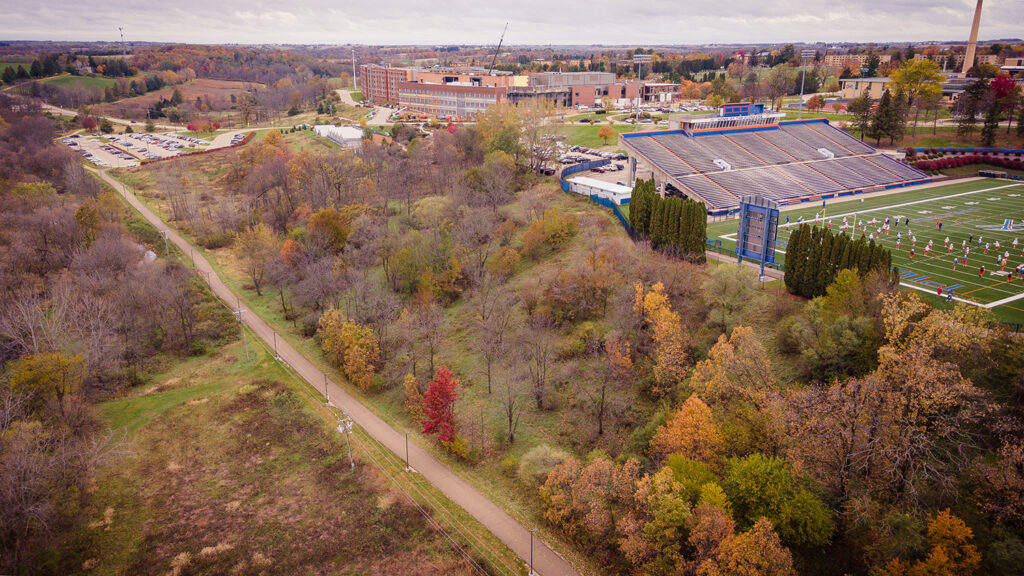
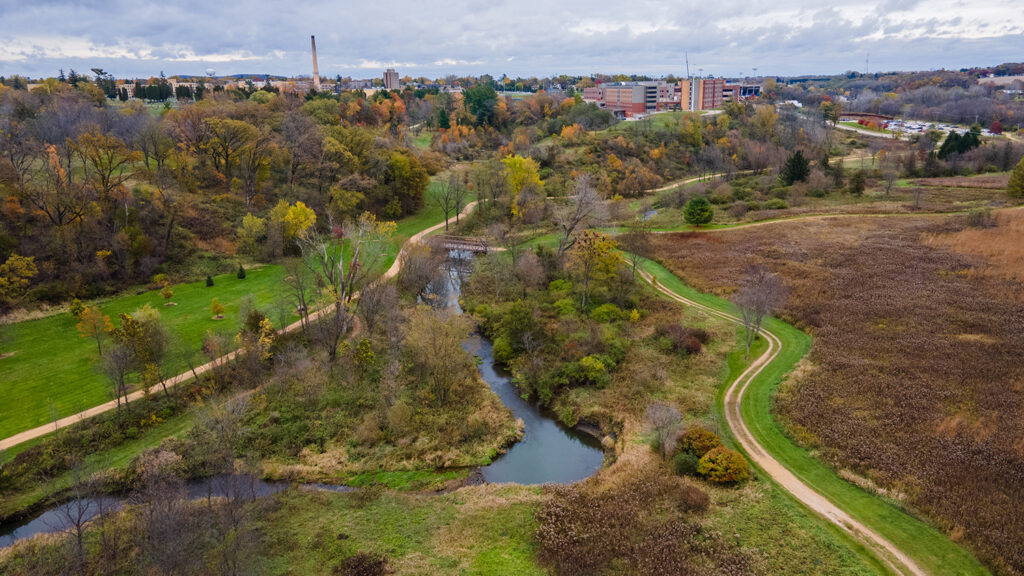
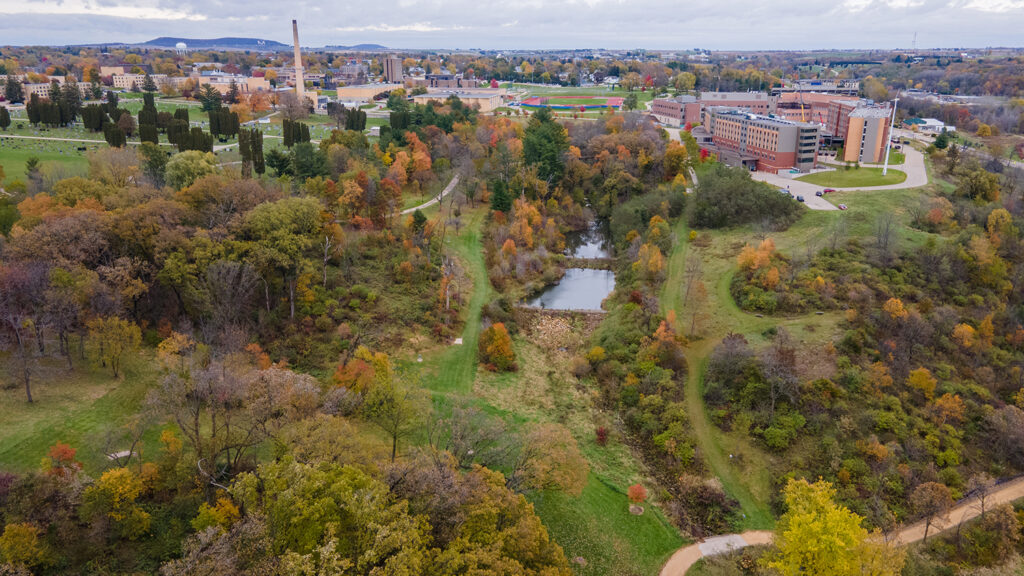
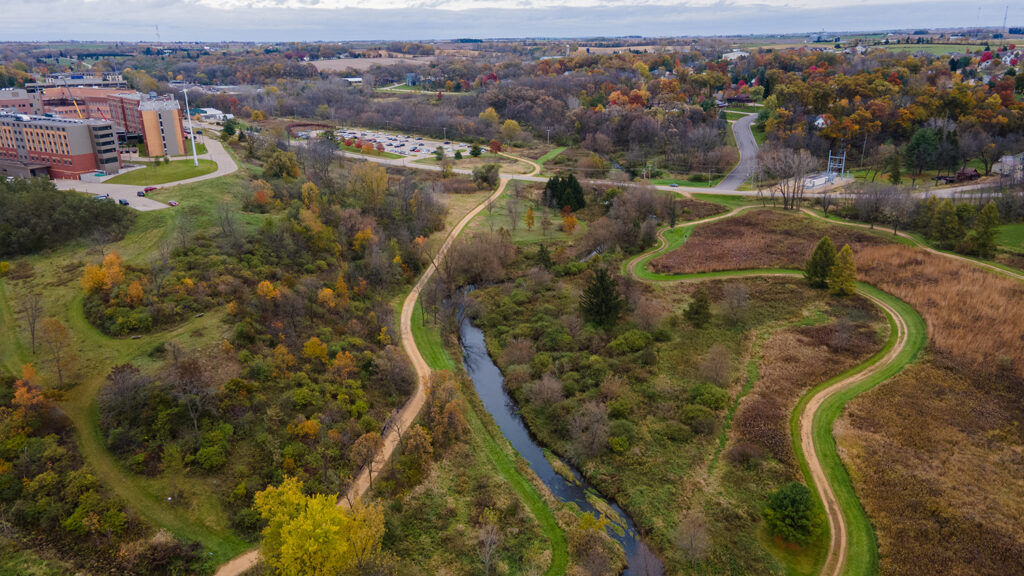
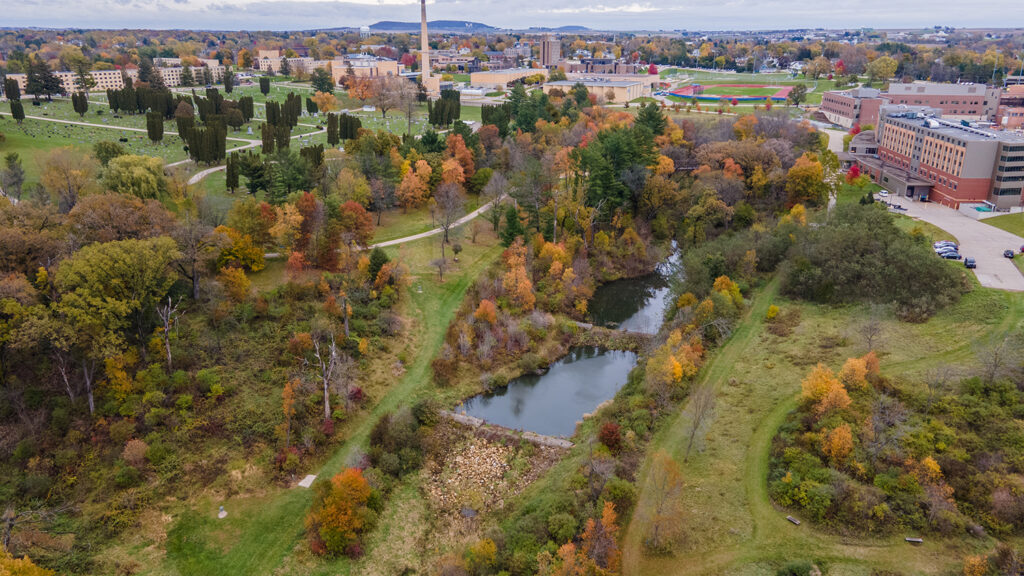
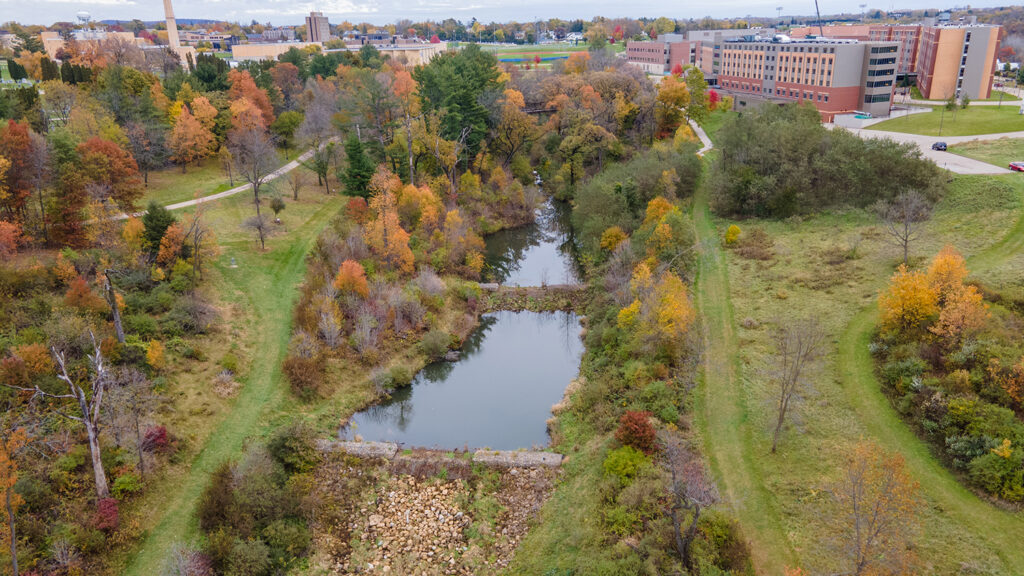
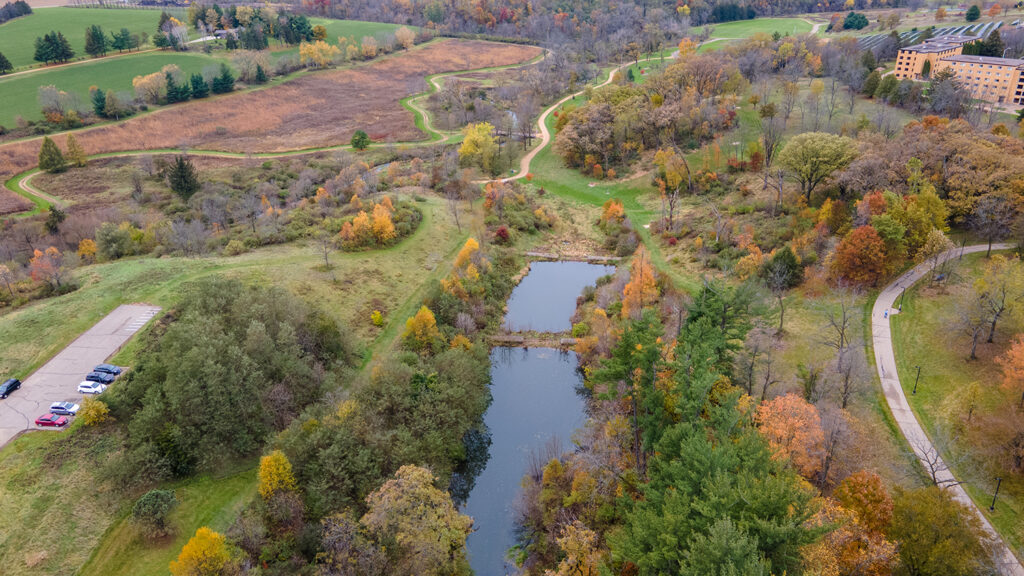
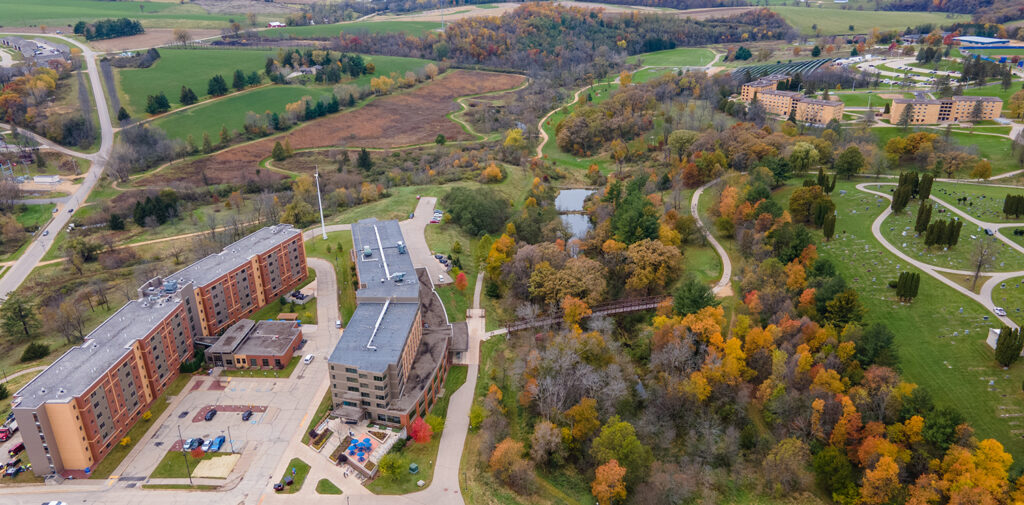
UWP is regulated within the Wisconsin Pollutant Discharge Elimination System (WPDES) Storm Water Discharge Permit Program. A condition of the permit requires UWP to meet a 40% reduction in total suspended solids (TSS) discharged from campus lands. Prior to this project, a third party review determined the existing stormwater management methods employed by UW-P were achieving an 11% reduction in TSS. Vierbicher was selected to analyze, plan, design and construct new stormwater management systems on the UWP campus to meet the 40% DNR permit requirement.
To achieve the stormwater management goals, Vierbicher reviewed the existing stormwater management measures and made recommendations for multiple new facilities on campus. A cost/benefit analysis was presented to the Campus sustainability committee for their review and ultimately incorporated in the Campus Master Plan. The Campus ultimately selected to move forward with a single, tiered pond solution.
The construction of the ‘Gully Pond’ stormwater facility had multiple challenges. The 100-acre urban watershed produces short duration, high flow rate discharges during storm events. The receiving drainage way was highly eroded with thick cover and not readily accessible. Multiple large hardwood trees were located in the project area and were considered an important part of the campus landscape. An aging municipal interceptor sewer conflicted with the proposed pond location and had been exposed by the eroding drainage way in multiple locations.
Vierbicher designed a tiered, wet detention pond system at a confluence of drainage ways through the campus. Adding stormwater management at this location allowed the entire campus to meet the sediment reduction goals required by the WPDES permit. Drainage-way stabilization measures were incorporated using a series of tiered gabion baskets and heavy rip-rap. Native seeding and landscaping were added to the final project to blend the project with the surrounding parklands.
Madison
Prairie Du Chien
© Vierbicher Associates, Inc 2024